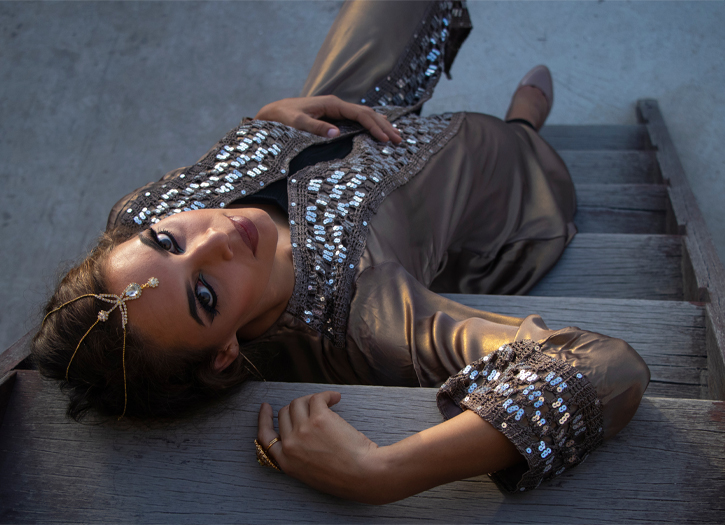A kaftan or caftan is a variant of the robe or tunic, and has been worn in a number of cultures around the world for thousands of years and is of Asiatic origin. In Russian usage, kaftan instead refers to a style of men’s long suit with tight sleeves. Used by many West and Southwest Asian ethnic groups, the kaftan is ancient Mesopotamian in origin.
Kaftans were worn by the sultans of the Ottoman Empire. Decoration on the garment, including colours, patterns, ribbons, and buttons, indicated the rank of the person who wore it. From the 14th century through the 17th century, textiles with large patterns were used. By the late 16th and early 17th centuries, decorative patterns on the fabrics had become smaller and brighter. By the second half of the 17th century, the most precious kaftans were those with ‘yollu’: vertical stripes with varying embroidery and small patterns – the so-called “Selimiye” fabrics.
Most fabrics manufactured in Turkey were made in Istanbul and Bursa, but some textiles came from as far away as Venice, Genoa, Persia (Iran), India, and even China. Kaftans were made from velvet, aba, bürümcük (a type of crepe with a silk warp and cotton weft), canfes, çatma (a heavy silk brocade), gezi, diba (Persian: دیبا), hatayi, kutnu, kemha, seraser (Persian سراسر) (brocade fabric with silk warp and gold or silver metallic thread weft), serenk, zerbaft (Persian زربافت), and tafta (Persian تافته). Favouredcolours were indigo blue, kermes red, violet, pişmişayva or “cooked quince”, and weld yellow.
The kaftan has been historically documented to be worn in Algeria since the beginning of the 16th century. Following the Ottoman tradition, the male Kaftan, known as the Kaftan of honour, was bestowed by the Ottoman Sultan upon the governors of Algiers who, in turn, bestowed caftans upon the Beys and members of distinguished families.According to Naima El KhatibBoujibar, the Caftan might have been introduced to Morocco by the Saadi king Abd al-Malik who had lived in Algiers and Istanbul. Worn by the dignitaries and women of the palace at first, it became fashionable among the middle classes from the late 17th century.
According to RachidaAlaoui, the caftan dates back to the 16th century in Morocco thanks to the Moorish history and therefore represents a medieval Andalusian heritage. The first mentions of this garment worn by Moroccans date back to the 16th century.In West Africa, a kaftan is a pullover robe, worn by both men and women. The women’s robe is called a kaftan, and the men’s garment is referred to as a Senegalese kaftan.A Senegalese kaftan is a pullover men’s robe with long bell-like sleeves. In the Wolof language, this robe is called a mbubb and in French, it is called a boubou. The Senegalese kaftan is an ankle-length garment, and is worn with matching drawstring pants called tubay. In Southeast Asia, the kaftan was originally worn by Arab traders.







Add Comment
You must be logged in to post a comment.